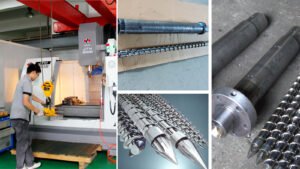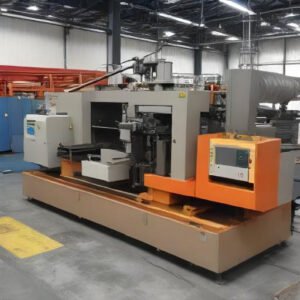Contents
Injection Molding Tolerance Chart
What is Injection Molding Tolerance?
Why Injection Molding Tolerance is Important
Types of Injection Molding Tolerance
The Relationship between Tooling and Injection Molding Tolerance
Injection Molding Tolerance Chart
Shrinkage and Injection Mold Tolerance Chart
How to Reduce Inconsistencies in Your Injection Molding Production Line
Design Your Products Accordingly to DFM
Choose the Appropriate Materials
Improve Your Processes
The Importance of Plastic Injection Mold Design
Injection Molding Tolerance Chart
Injection molding is a great way to mass-produce complex parts thanks to its high scalability and ease of use. However, even this method is not perfect. When using injection molding in your production line, perfect consistency is impossible, so there are some differences between products. These differences are measured by a unit called injection molding tolerance.
Injection molding tolerance is an inherent part of injection molding, but keeping the differences to a minimum is not an easy task, and it would require engineers to regularly check the injection molding tolerance chart to closely monitor the current tolerance level.
What is Injection Molding Tolerance?
No matter how advanced your machines are, there will be a certain level of differences between the finished products, even though they came out of the same mold. Injection molding tolerance refers to the acceptable level of differences between the products.
Part designers are the ones who calculate the optimal injection molding tolerance for the parts, and they will put this information into the technical design. The engineers at the factory will then have to recalibrate the tooling and processes. Naturally, the lower the injection molding tolerance, the more expensive and advanced the process will become, as there is little room for error.

Why Injection Molding Tolerance is Important
Even with the best tools possible, perfect consistency remains elusive. However, manufacturers still have to deliver consistent parts to the customers, so a compromise must be reached. Injection molding tolerance sets a realistic level of expectations the customers can expect from the manufacturers, and it also offers some room for errors on the manufacturer’s end.
Types of Injection Molding Tolerance
When engineers talk about injection molding tolerance, they don’t just talk about the inconsistencies in the dimension itself, but also other common factors. Other types of injection molding tolerance include:
- Straightness or warpage: This category refers to how much the parts differ in warpage. Some parts may experience unwanted warpage that renders them unusable.
- Hole diameter: This category refers to the differences in the diameter of the holes in the parts.
- Ovality: This refers to the roundness of the parts. Some cylindrical parts may lose wall thickness and become less round, making it hard to connect them with other parts.
- and become less round, making it hard to connect them with other parts.
The Relationship between Tooling and Injection Molding Tolerance
Better tools result in better end products, that much is clear. What most people don’t know is the extent to which this is true. Well-maintained tools offer much more control and consistency throughout the manufacturing process, enabling the engineers to make calibrations when necessary. For example, if the cooling process is not going well, the engineer can make quick adjustments right away to maintain consistency.
Injection Molding Tolerance Chart
Each material comes with its own injection molding tolerance level, owing to the structural differences between them. To pinpoint the exact injection molding tolerance level of a material, part designers will often use an injection molding tolerance chart. Think of it as a cheat sheet for part designers.
An average injection molding tolerance chart will look like this:
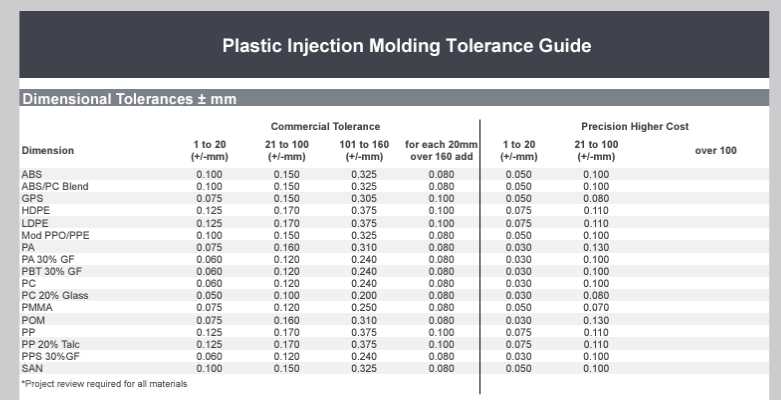
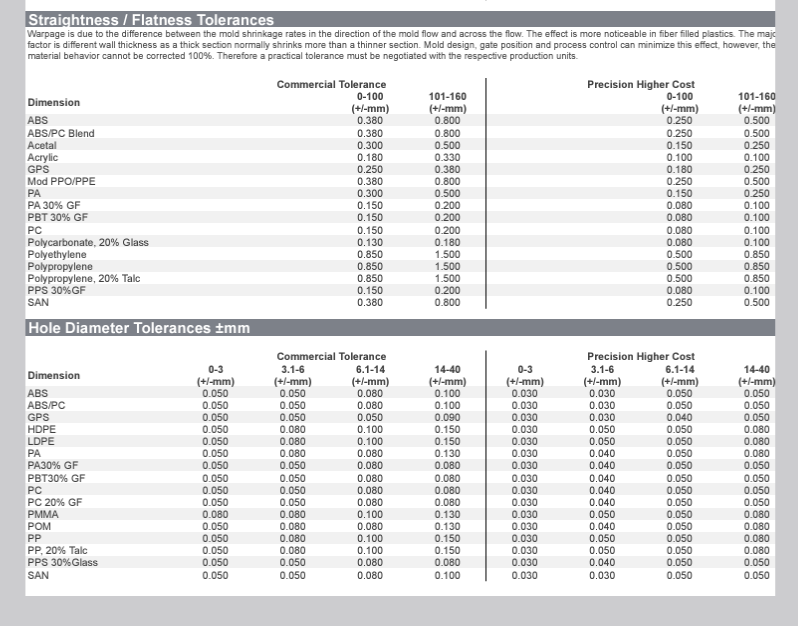
In this chart, you can see the common injection molding tolerance for most materials. Some businesses will also go above and beyond to make injection molding tolerance for high-precision scenarios, where you have to take in orders with as few inconsistencies as possible.
Shrinkage and Injection Mold Tolerance Chart
The finished products will shrink a little bit as it goes through the cooling process, which causes inconsistencies between products. Thus, you should also take mold shrinkage into account when calculating your injection mold tolerance chart. Otherwise, you might end up with a much higher level of inconsistencies.
How to Reduce Inconsistencies in Your Injection Molding Production Line
Even with a high injection molding tolerance value, your goal should still be consistently producing high-quality parts. There are several ways you can improve the overall efficiency of your production line and get better consistency between products.
Design Your Products Accordingly to DFM
Design for Manufacturing (DFM) is a set of principles that encourages engineers to design products that are easy to manufacture, easing the burden of the manufacturers. Every single industry applies these principles to a certain extent, but this is particularly important in injection molding, where the key to better manufacturing lies in better design.
Choose the Appropriate Materials
As demonstrated by the chart above, different materials have different injection molding tolerances. This means that if you use multiple materials during the same production line, there is a much higher chance of inconsistencies between the finished products. You should choose the appropriate material for the products you are going for as well.
Improve Your Processes
There’s always room for improvement when it comes to processes. New technologies are coming out at breakneck speed, which means that there is always a better process with more control and efficiency out there. Save some budgets for R&D, and you will be surprised with how much it helps in the long run.
The Importance of Plastic Injection Mold Design
The key to minimizing inconsistencies in injection molding is to design the perfect plastic injection mold. With the right mold that adheres to the DFM principles, you will be able to greatly cut down on costs as well as to create consistently amazing products. If you are looking for the best plastic injection molds for your business, check out our selection at KuiXing. We are injection molding experts with over 20 years of experience in the field, and we will gladly take on your orders!
An injection molding tolerance chart is a handy chart that shows the commercial tolerance level of most common materials used in injection molding. It also shows the tolerance level of the same material in a scenario that would require high precision. Without an injection molding tolerance chart, the part designers would have to rely on memory to design parts, resulting in disastrous results as well as massive inconsistencies between the parts that your manufacturing plant produces. It should also be noted that each business uses a different version of the injection molding tolerance chart.
Reference:
https://www.pcbnet.com/blog/a-guide-to-design-for-manufacturing-dfm-principles/
